 W
WFire is the rapid oxidation of a material in the exothermic chemical process of combustion, releasing heat, light, and various reaction products. Fire is hot because the conversion of the weak double bond in molecular oxygen, O2, to the stronger bonds in the combustion products carbon dioxide and water releases energy (418 kJ per 32 g of O2); the bond energies of the fuel play only a minor role here. At a certain point in the combustion reaction, called the ignition point, flames are produced. The flame is the visible portion of the fire. Flames consist primarily of carbon dioxide, water vapor, oxygen and nitrogen. If hot enough, the gases may become ionized to produce plasma. Depending on the substances alight, and any impurities outside, the color of the flame and the fire's intensity will be different.
 W
WArson is a crime of willfully and maliciously setting fire to or charring property. Though the act typically involves buildings, the term arson can also refer to the intentional burning of other things, such as motor vehicles, watercraft, or forests. The crime is typically classified as a felony, with instances involving a greater degree of risk to human life or property carrying a stricter penalty. A common motive for arson is to commit insurance fraud. In such cases, a person destroys their own property by burning it and then lies about the cause in order to collect against their insurance policy.
 W
WA backdraft is a rapid or explosive burning of superheated gasses in a fire, caused when oxygen rapidly enters an oxygen-depleted environment; for example, when a window or door to an enclosed space is opened or broken. Backdrafts present a serious threat to firefighters. There is some debate concerning whether backdrafts should be considered a type of flashover.
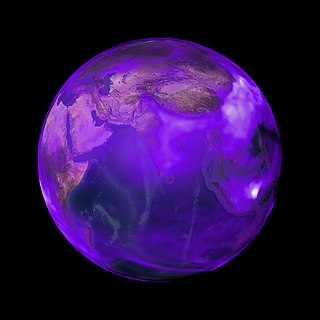 W
WChemically, black carbon (BC) is a component of fine particulate matter. Black carbon consists of pure carbon in several linked forms. It is formed through the incomplete combustion of fossil fuels, biofuel, and biomass, and is one of the main types of particle in both anthropogenic and naturally occurring soot. Black carbon causes human morbidity and premature mortality. Because of these human health impacts, many countries have worked to reduce their emissions, making it an easy pollutant to abate in anthropogenic sources.
 W
WA boiling liquid expanding vapor explosion is an explosion caused by the rupture of a vessel containing a pressurized liquid that has reached temperatures above its boiling point. Because the boiling point of a liquid rises with pressure, the contents of the pressurized vessel can remain liquid so long as the vessel is intact. If the vessel's integrity is compromised, the loss of pressure and dropping boiling point can cause the liquid to rapidly convert to gas and expand extremely rapidly. If the gas is combustible as well, as is the case e.g. with hydrocarbons and alcohols, further damage can be caused by an ensuing fire.
 W
WA boilover type of fire refers to an extremely hazardous situation where an attempt is made to extinguish semi-enclosed oil or petrochemical fueled fire with water. The hazard results due to the difference in density between oil and water.
 W
WChimney cranes, also known as fireplace cranes and pot cranes, are a feature of the homes of the American Colonial period and 18/19th century of Western Europe. Although the chimney crane may be thought by some to be a Yankee invention, it was common in both British and American houses of the era. The purpose of the crane is to allow a cooking pot to be swung away from the fire, preventing burn injuries to the cook as well as regulating temperature of the pot. The chimney crane is an important step in open hearth cooking as it helped save lives and allowed cooks to be more creative.
 W
WA conflagration is a large and destructive fire that threatens human life, animal life, health, and/or property. It may also be described as a blaze or simply a (large) fire. A conflagration can begin accidentally, be naturally caused (wildfire), or intentionally created (arson). A very large fire can produce a firestorm, in which the central column of rising heated air induces strong inward winds, which supply oxygen to the fire. Conflagrations can cause casualties including deaths or injuries from burns, trauma due to collapse of structures and attempts to escape, and smoke inhalation.
 W
WCremation is a method of final disposition of a dead body through burning (combustion).
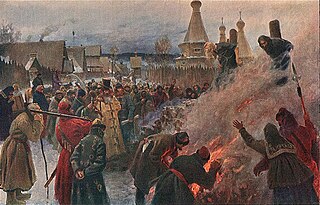 W
WDeath by burning is an execution method involving combustion or exposure to extreme heat. It has a long history as a form of capital punishment, and many societies have employed it for criminal activities such as treason, heresy and witchcraft. The best-known execution of this type is burning at the stake, where the condemned is bound to a large wooden stake and a fire lit beneath them.
 W
WIn combustion, a diffusion flame is a flame in which the oxidizer and fuel are separated before burning. Contrary to its name, a diffusion flame involves both diffusion and convection processes. The name diffusion flame was first suggested by S.P. Burke and T.E.W. Schumann in 1928, to differentiate from premixed flame where fuel and oxidizer are premixed prior to burning. The diffusion flame is also referred to as nonpremixed flame. The burning rate is however still limited by the rate of diffusion. Diffusion flames tend to burn slower and to produce more soot than premixed flames because there may not be sufficient oxidizer for the reaction to go to completion, although there are some exceptions to the rule. The soot typically produced in a diffusion flame becomes incandescent from the heat of the flame and lends the flame its readily identifiable orange-yellow color. Diffusion flames tend to have a less-localized flame front than premixed flames.
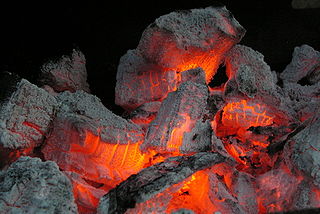 W
WAn ember is a glowing, hot coal made of greatly heated wood, coal, or other carbon-based material that remain after, or sometimes precede, a fire. Embers can glow very hot, sometimes as hot as the fire which created them. They radiate a substantial amount of heat long after the fire has been extinguished, and if not taken care of properly can rekindle a fire that is thought to be completely extinguished and can pose a fire hazard. In order to avoid the danger of accidentally spreading a fire, many campers pour water on the embers or cover them in dirt. Alternatively, embers can be used to relight a fire after it has gone out without the need to rebuild the fire – in a conventional fireplace, a fire can easily be relit up to 12 hours after it goes out, provided that there is enough space for air to circulate between the embers and the introduced fuel.
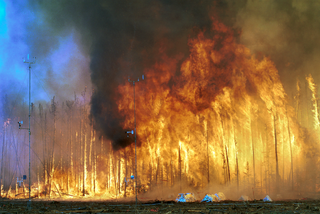 W
WTerrestrial ecosystems found in the boreal regions of North America and Eurasia cover less than 17% of the earth's land surface, yet contain more than 30% of all carbon present in the terrestrial biome. In terms of carbon storage, the boreal region consists of three ecosystems: boreal forest, peatland, and tundra. Vast areas of the globe and are contributing greatly to atmospheric carbon release due to increased temperature and fire hazard. High northern latitudes will experience the most significant increase in warming on the planet as a result of increased atmospheric greenhouse gases thus placing in jeopardy the carbon sink in these areas. In addition to the release of carbon through the melting of permafrost, high intensity wildfires will become more common and thus contribute to the release of stored carbon. This means that the boreal forest and its fire regime is becoming an increasingly more significant factor in determining the global carbon budget.
 W
WFire ecology is a scientific discipline concerned with natural processes involving fire in an ecosystem and the ecological effects, the interactions between fire and the abiotic and biotic components of an ecosystem, and the role as an ecosystem process. Many ecosystems, particularly prairie, savanna, chaparral and coniferous forests, have evolved with fire as an essential contributor to habitat vitality and renewal. Many plant species in fire-affected environments require fire to germinate, establish, or to reproduce. Wildfire suppression not only eliminates these species, but also the animals that depend upon them.
 W
WA fire sale is the sale of goods at extremely discounted prices. The term originated in reference to the sale of goods at a heavy discount due to fire damage. It may or may not be defined as a closeout, the final sale of goods to zero inventory. They are said to occur in the financial markets when bidders who value assets highly are prevented from bidding on them, depressing the average selling price below what it otherwise would be. This lowering of the price can cause even further issues because it may be inaccurately perceived as signalling negative information.
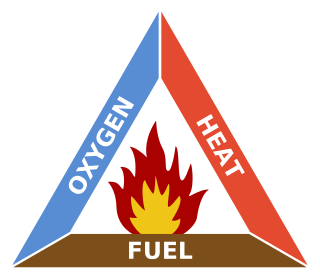 W
WThe fire triangle or combustion triangle is a simple model for understanding the necessary ingredients for most fires.
 W
WFirefighting is the act of attempting to prevent the spread of and extinguish significant unwanted fires in buildings, vehicles, woodlands, etc. A firefighter suppresses fires to protect lives, property and the environment.
 W
WA firestorm is a conflagration which attains such intensity that it creates and sustains its own wind system. It is most commonly a natural phenomenon, created during some of the largest bushfires and wildfires. Although the term has been used to describe certain large fires, the phenomenon's determining characteristic is a fire with its own storm-force winds from every point of the compass. The Black Saturday bushfires and the Great Peshtigo Fire are possible examples of forest fires with some portion of combustion due to a firestorm, as is the Great Hinckley Fire. Firestorms have also occurred in cities, usually due to targeted explosives, such as in the aerial firebombings of Hamburg, Dresden, and Tokyo, and the atomic bombings of Hiroshima and Nagasaki.
 W
WA flame is the visible, gaseous part of a fire. It is caused by a highly exothermic reaction taking place in a thin zone. Very hot flames are hot enough to have ionized gaseous components of sufficient density to be considered plasma.
 W
WA flame test is an analytical procedure used in chemistry to detect the presence of certain elements, primarily metal ions, based on each element's characteristic emission spectrum. The color of flames in general also depends on temperature; see flame color.
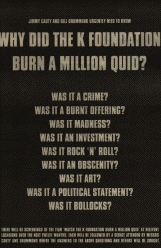 W
WK Foundation Burn a Million Quid was a performance art action on 23 August 1994 in which the K Foundation burned cash in the amount of one million pounds sterling in a disused boathouse on the Ardfin Estate on the Scottish island of Jura. The money represented the bulk of the K Foundation's funds, earned by Drummond and Cauty as The KLF, one of the United Kingdom's most successful pop groups of the early 1990s.
 W
WThe limiting oxygen concentration (LOC), also known as the minimum oxygen concentration (MOC), is defined as the limiting concentration of oxygen below which combustion is not possible, independent of the concentration of fuel. It is expressed in units of volume percent of oxygen. The LOC varies with pressure and temperature. It is also dependent on the type of inert (non-flammable) gas.
 W
WA luminous flame is a burning flame which is brightly visible. Much of its output is in the form of visible light, as well as heat or light in the non-visible wavelengths.
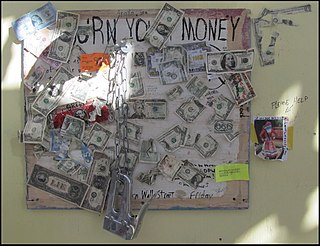 W
WMoney burning or burning money is the purposeful act of destroying money. In the prototypical example, banknotes are destroyed by literally setting them on fire. Burning money decreases the wealth of the owner without directly enriching any particular party.
 W
WIn various burners, the oxidizing flame is the flame produced with an excessive amount of oxygen. When the amount of oxygen increases, the flame shortens, its color darkens, and it hisses and roars. With some exceptions, the oxidizing flame is usually undesirable for welding and soldering, since, as its name suggests, it oxidizes the metal's surface. The same principle is important in firing pottery—see Reducing atmosphere.
 W
WOxyhydrogen is a mixture of hydrogen (H2) and oxygen (O2) gases. This gaseous mixture is used for torches to process refractory materials and was the first gaseous mixture used for welding. Theoretically, a ratio of 2:1 hydrogen:oxygen is enough to achieve maximum efficiency; in practice a ratio 4:1 or 5:1 is needed to avoid an oxidizing flame.
 W
WA premixed flame is a flame formed under certain conditions during the combustion of a premixed charge of fuel and oxidiser. Since the fuel and oxidiser—the key chemical reactants of combustion—are available throughout a homogeneous stoichiometric premixed charge, the combustion process once initiated sustains itself by way of its own heat release. The majority of the chemical transformation in such a combustion process occurs primarily in a thin interfacial region which separates the unburned and the burned gases. The premixed flame interface propagates through the mixture until the entire charge is depleted. The propagation speed of a premixed flame is known as the flame speed which depends on the convection-diffusion-reaction balance within the flame, i.e. on its inner chemical structure. The premixed flame is characterised as laminar or turbulent depending on the velocity distribution in the unburned pre-mixture.
 W
WA pyre, also known as a funeral pyre, is a structure, usually made of wood, for burning a body as part of a funeral rite or execution. As a form of cremation, a body is placed upon or under the pyre, which is then set on fire.
 W
WPyrokinesis is the purported psychic ability allowing a person to create and control fire with the mind. There is no conclusive evidence that pyrokinesis is a real phenomenon. Alleged cases are hoaxes, the result of trickery.
 W
WPyromania is an impulse control disorder in which individuals repeatedly fail to resist impulses to deliberately start fires, in order to relieve some tension or for instant gratification. The term pyromania comes from the Greek word πῦρ. Pyromania is distinct from arson, the deliberate setting of fires for personal, monetary or political gain. Pyromaniacs start fires to induce euphoria, and often fixate on institutions of fire control like fire houses and firemen. Pyromania is a type of impulse control disorder, along with kleptomania, intermittent explosive disorder and others.
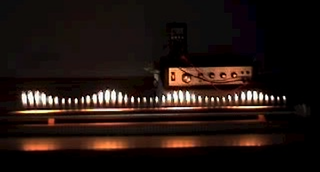 W
WA Rubens' tube, also known as a standing wave flame tube, or simply flame tube, is an antique physics apparatus for demonstrating acoustic standing waves in a tube. Invented by German physicist Heinrich Rubens in 1905, it graphically shows the relationship between sound waves and sound pressure, as a primitive oscilloscope. Today, it is used only occasionally, typically as a demonstration in physics education.
 W
WSmouldering or smoldering is the slow, flameless form of combustion, sustained by the heat evolved when oxygen directly attacks the surface of a condensed-phase fuel. Many solid materials can sustain a smouldering reaction, including coal, cellulose, wood, cotton, tobacco, cannabis, peat, plant litter, humus, synthetic foams, charring polymers including polyurethane foam and some types of dust. Common examples of smouldering phenomena are the initiation of residential fires on upholstered furniture by weak heat sources, and the persistent combustion of biomass behind the flaming front of wildfires.
 W
WA spark is an incandescent particle. Sparks may be produced by pyrotechnics, by metalworking or as a by-product of fires, especially when burning wood.
 W
WStubble burning is the practice of intentionally setting fire to the straw stubble that remains after grains, such as rice and wheat, have been harvested. The technique was widespread until the 1990s, when governments increasingly restricted its use.
 W
WSwan bands are a characteristic of the spectra of carbon stars, comets and of burning hydrocarbon fuels. They are named for the Scottish physicist William Swan, who first studied the spectral analysis of radical diatomic carbon (C2) in 1856.
 W
WThe theft of fire for the benefit of humanity is a theme that recurs in many world mythologies. Examples include:
 W
WA torch is a stick with combustible material at one end, which is ignited and used as a light source. Torches have been used throughout history, and are still used in processions, symbolic and religious events, and in juggling entertainment. In some countries "torch" in modern usage is the term for a battery-operated portable light.
 W
WA wash copper, copper boiler or simply copper is a wash house boiler, generally made of galvanised iron, though the best sorts are made of copper. In the inter-war years they came in two types. The first is built into a brickwork furnace and was found in older houses. The second was the free-standing or portable type, it had an enamelled metal exterior that supported the inner can or copper. The bottom part was adapted to hold a gas burner, a high pressure oil or an ordinary wood or coal fire. Superior models could have a drawing-off tap, and a steam-escape pipe that lead into the flue.